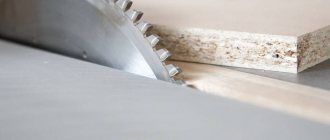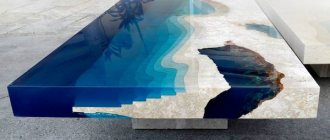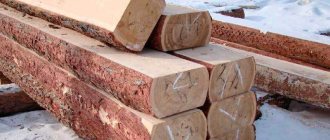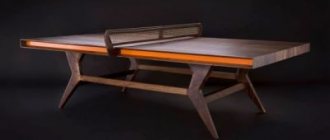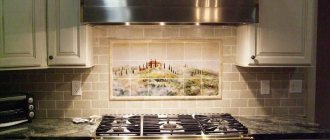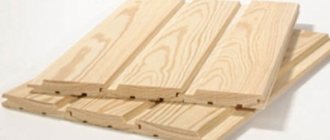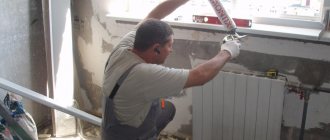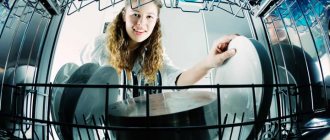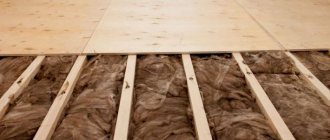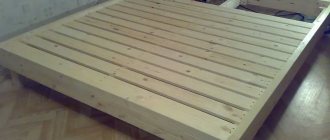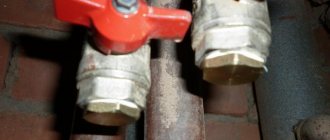Furniture made from chipboard and MDF has long become commonplace. New, easier to process and use, cheaper materials are actively replacing traditional products made from various tree species. And this is not surprising. The performance characteristics of high-quality artificial materials based on sawdust are in no way inferior to solid wood. And in a number of parameters they are even superior.
When choosing furniture for their home or apartment or organization, many buyers ask a logical question: how reliable and durable are these materials, and what are their differences. You often hear that DSAMP and MDF are practically the same thing, made according to common recipes, and there is no point in choosing. Is it so? In order not to make a mistake when choosing furniture, you need to clearly understand the differences between these two materials. What nuances need to be taken into account when purchasing furnishings for certain needs. Let's try to figure it out together with the experts.
What are the differences between laminated chipboard and MDF?
At first glance, indeed, furniture made from chipboard and MDF looks the same. The products look good, almost the same colors and textures are used. Even the shape and style of many models of kitchen, bedroom or living room sets are made according to the same design. Meanwhile, the difference between them is huge: in quality, in operating conditions, and even in price. All the differences are hidden in the depths, behind the attractive facades. They are associated with the peculiarities of production technologies for particle boards and finely dispersed fractions.
Assembly order
First you need to cut the materials and process the edges of the chipboard. It is better to order the cutting at the factory, where the edges are also performed.
If you want to do it yourself, you will need a melamine edge and an iron. Turning it on at ¾ power, you need to iron the edge applied to the open cut.
Its edges may slightly protrude beyond the plane of the slab; in this case, the excess should be carefully cut off with a construction knife. All parts are laid out, marked and holes are drilled for confirmations, and legs or bearings are immediately attached.
If the bed is made with a bottom, under a regular mattress, the assembly principle is as follows:
- First, a frame is assembled from timber, 3 transverse ones are attached between 2 longitudinal ones;
- The frame is covered with fiberboard on top;
- sidewalls (side drawers) made of laminated chipboard are attached to the longitudinal beams;
- The back and headboard are attached to the ends of the side frames; fastening is carried out in 2 places with a distance of 3 cm from the upper and lower edges of the drawer.
Expert opinion
Smirnova Ekaterina Anatolevna
7 years of experience in interior design, professional architect
If you purchased a frame mattress and decided to make a bed without a bottom, the assembly sequence changes slightly. First, 3 crossbars are attached between the sidewalls, 2 closer to the edges and 1 in the center.
The crossbars are arranged in a wide plane perpendicular to the floor, each is fastened at the end in 2 places. Then, as in the previous version, the footboard and headboard are attached to the sides.
This design can also be used with a regular mattress if you place a lattice under-mattress panel on the supports. If you are making a standard sized bed, it will not be difficult to find at a furniture store.
The height to which the mattress is raised relative to the floor can be adjusted to your taste. As for the depth to which it is recessed into the box, it should be sufficient to securely fix it.
But the mattress must rise at least a few centimeters above the upper edges of the sides. You can raise the bottom higher and make drawers underneath to create a bed-podium, but this is a more complex design.
A bed made of laminated chipboard can be decorated with decorative overlays made of MDF 10 mm thick in a contrasting color. They are attached to the visible part of the headboard and footboard with an indentation of 8 cm from each edge (for the headboard - from the top edge and on the sides), so the dimensions of each pad should be 16 cm less than the corresponding dimensions of the footboard.
They are secured with screws from the chipboard side. The length of the screws should be a couple of millimeters less than the total thickness of the chipboard and MDF.
You can make overlays from plywood covered with a thin layer of foam rubber and furniture fabric. The overlays are attached before the assembly of the main structure begins.
Disadvantages of laminated chipboard
- Due to the large number of large chips and heterogeneity of the structure, chipboards are prone to chipping of individual particles and the appearance of chips. Products can only be sawed in straight lines. They are not subject to fine milling or laser engraving. Therefore, it is very rare to find beautiful furniture facades made of chipboard, with figured cutouts, 3D relief images, and complex patterns. Mostly even, smooth doors are made from this material, suitable for modern styles.
- If water regularly gets into the joints and seams, the surface in these places swells and bulges into a hump. The product increases its volume up to 30%. The film begins to peel off. Inside the slab, the mass becomes loose, crumbles, and black mold appears. To avoid this, you should choose furniture with laser-cut edges (soldered joints). Such products are more durable. In addition, spilled liquids must be promptly removed by wiping the surface with a soft, clean cloth.
- Due to the low density of the base, the places where the fittings are attached gradually crumble. The fasteners begin to move freely in the socket. Furniture made from chipboard is not intended for frequent assembly and disassembly. It is enough to transport the set 1-2 times to a new place of residence, and it will warp in the most unimaginable way due to completely loose fastenings. To remedy the situation, you can use wood glue or use thicker screws. Or initially purchase products that use not ordinary fasteners, but bolts with wide washers.
- Low-grade types of chipboard negatively affect the health of children, adults, and pets. To produce the cheapest materials, large amounts of resins that emit formaldehyde are used. If new furniture has a specific, chemical smell, it is better to refuse the purchase. Living next to such a time bomb is simply dangerous.
Perhaps the most important disadvantage of laminated chipboard is its short service life. Such furniture lasts on average 5-7 years, subject to the rules of operation.
What else should you pay attention to?
Legs
Look at the legs. The larger the area of each leg, the stronger the entire product. The number of legs also matters. There are at least four, but some larger models may have additional center supports.
Accessories
Accessories. Bolts and fasteners should not stick out, have sharp edges or, conversely, noticeable play. The most reliable companies are AMIG (Spain), Blum (Austria), GTV (Poland), Hettich International (Germany), Russian manufacturers Boyard and Valmax.
Advantages of MDF
- Since formaldehyde resins are not used in the production of MDF boards, they are much safer than chipboard. In fact, it is the same wood, with a small content of natural or urea resins, only more uniform and durable. The material is used in the manufacture of children's furniture, cribs and changing tables for newborns, products for children's and medical institutions. By purchasing furniture made from high-quality MDF, the buyer can be completely confident in its safety for health.
- MDF, even in its natural, uncovered form, is not afraid of water. Its dense structure simply does not allow liquids to be quickly absorbed, unlike some types of natural wood and, especially, chipboard. And an additional protective coating in the form of a laminating film or veneer gives it excellent moisture-resistant characteristics. Even many hours of exposure to puddles of water or other liquids are not dangerous for MDF surfaces. That is why furniture made from this material is recommended for “wet areas” - kitchens, bathrooms, swimming pools, toilets, dressing rooms.
- Dense sheets can be bent if necessary: they do not break or crack, and retain their shape perfectly. This feature is widely used in the manufacture of curved or concave facades and other elements.
- MDF sheets, thanks to their homogeneous structure, make it possible to produce richly decorated furniture facades. They perfectly withstand all types of processing: sawing, shape cutting, milling. The possibilities of milling this material are limited only by the designer’s imagination. Craftsmen form products with relief figures and designs, carve complex recesses and patterns, apply entire pictures to slabs, and make carved platbands and moldings.
- The edges and front part of the products have no joints or seams, as they are covered with one sheet of protective and decorative material. That is why products made from MDF successfully resist moisture and chemicals. The coating is so dense that it is very difficult to scratch or make a dent.
- You can spill water, caustic fruit acids, or soda solution on MDF countertops and kitchen aprons. If you wipe up the resulting puddle in a timely manner, there will be no consequences for the coating.
- Furniture made from MDF perfectly withstands repeated assembly and disassembly when moving and moving to other rooms. In this respect, it is comparable to products made from natural solid wood.
- Consumers are offered a huge number of finishing options: PVC film with the most fantastic shades and textures; glossy, mirror, matte and semi-matte coatings; products with metallic, mother-of-pearl effects, interspersed with sparkles and metal threads, patina; veneer from elite wood species; surfaces that perfectly imitate any type of wood, stone, textiles, leather. Even the most picky buyer will definitely find a product to his liking!
Chipboard production? How to define quality?
To produce chipboard, sawdust and shavings are compressed and impregnated with formaldehyde resins for gluing, and the resulting board is usually laminated with melamine film.
The letter “L” at the beginning of the abbreviation indicates that the chipboard is laminated. The film not only protects the slab from moisture and other external influences, but also prevents the release of formaldehyde into the external environment. There is a safety classification for laminated chipboards based on the concentration of formaldehyde:
- E1 – formaldehyde emission class, considered safe for furniture production (this board is made according to European standards;)
- Class E2 - strictly prohibited for use in the production of children's furniture;
- Class E 0.5 – also complies with European quality standards. However, its use is not always necessary, since the film prevents the evaporation of the harmful compound;
- E 3 – strictly prohibited for use in production.
When buying furniture, be sure to ask the seller about the safety class and ask for certificates.
What are the disadvantages of MDF?
- Quite a high price compared to chipboard - 30-50% higher. High-quality MDF boards, coated with natural veneer, elite types of plastic or durable enamel, are close in cost to solid wood. However, they last two to three times longer than products made from chipboard or even solid wood.
- Plates consisting of small, homogeneous particles are prone to burning, even despite special impregnation with fire retardants.
- Dense material has more weight than particle boards, which affects the weight of the finished products. This must be taken into account when transporting and choosing an installation location.
To reduce the final cost of products and increase the number of sales, furniture manufacturers offer compromise options:
- cabinets for kitchens, living rooms, and bedrooms are made from straight, laconic chipboard plates;
- and beautifully decorated, carved facades are made from MDF.
Such furniture is affordable and lasts longer, thanks to durable, high-quality facades that take the brunt of the impact.
Design options, sizing
It is necessary to take into account the characteristics of the build of the people who will use the bed, and their number. It can be single, one-and-a-half (for one large person) or double.
By making a bed from chipboard with your own hands, you can increase its length if it is intended for a very tall person. For children and teenagers, beds are made shorter and narrower.
The external dimensions of the bed must be determined based on the size of the room where it will be installed. Usually the headboard is placed close to the wall, and there should be free access from the footboard.
When determining the size of the bed, you need to start from the size of the mattress. When choosing it, you should adhere to the following principles:
- the minimum width of a sleeping place for an adult is 80 cm, for a child – 60–70;
- the length of the mattress must exceed the height of the tallest person (of those who will sleep on it) by at least 15 cm;
- The more a person weighs, the thicker the mattress is needed.
Expert opinion
Smirnova Ekaterina Anatolevna
7 years of experience in interior design, professional architect
People with non-standard dimensions (height more than 2 m) have to order a mattress made according to individual measurements. And you can make a bed from chipboard of a suitable size yourself, this will provide significant savings.
How to develop a drawing of a bed if the dimensions of the mattress are known? It should fit almost flush into the box, but a small gap is needed to allow the laundry to be tucked in; 0.5 cm on each side is enough. Thus, the internal dimensions of the bed box should be 1 cm in length and width larger than the dimensions of the mattress.
External ones depend on the thickness of the material and the configuration of the case.
For example, the schematic drawing and photo below depict a bed where horizontal linings are made on the vertical sides of the frame, so that the external dimensions are significantly larger than the internal ones (+31 to the width of the mattress and +37 to the length).
There are frame mattresses that have a rigid bottom and frame; when using them in a bed, a bottom is not needed; you only need to install crossbars to support the mattress and tie the structure.
You can make a bed with legs, but the simplest design is a bed resting on the lining of a box. Sometimes the bed rests on the back (foot) and headboard, and the sides are raised higher, in this case it is recommended to make internal legs - 2 longitudinal boards (chipboard strips) for additional support.
A popular solution is a double bed with a bedside table with folding lids at the head.
Necessary materials
To save materials and money, you can use parts taken from an old bed. Among them:
- corners;
- slats;
- plywood;
- bars;
- furniture bolts with nuts;
- confirmations.
Laminated boards and an old mattress will be used. Panels with an undamaged coating can be used in the manufacture of external frame elements; the rest, after repair, will be useful for partitions, stiffeners, drawers, etc.
The drawers, footboard and headboard of the bed are best made from 22 mm thick chipboard. The furniture will be heavier than from 16 mm slabs, but will be more durable. The base for the mattress can be plywood with a thickness of at least 10 mm. The bottoms of the boxes are cut out from fiberboard sheets.
- self-tapping screws;
- glue (PVA and Moment);
- furniture edge;
- sandpaper for cleaning the surfaces of plywood and wood parts.
You may need hardware for drawers, leatherette or other material for upholstering the headboard.
Plastic countertop for the kitchen: reviews
A plastic kitchen is presented in reviews as a budget-friendly and quite successful option for the home. Users note not only its low cost, but also its convenience and ease of installation, and a fairly long service life with proper use. Its low sensitivity to mechanical damage and heat resistance were also noted. But still, users advise not to use the tabletop as a hot plate or cutting board, since if scratches form, the surface cannot be restored.
In general, reviews of plastic kitchen countertops are positive, but there are also negative reviews. Some users noted that the surface becomes deformed after a short time, and there are places where the tabletop has swollen. This is most likely due to improper operation, as well as the choice of the cheapest CPL brand plastic. It is an inexpensive, but also short-lived material. It is better to give preference to HPL.
pros
You may be interested in: Enameled kitchen facades: features, advantages, disadvantages and coating care
Plastic countertops for the kitchen, photos of which are presented above, have many advantages in addition to their low cost.
The advantages of a plastic kitchen are as follows:
- affordable price - for example, the cost of a domestically produced laminated board measuring 60 x 24.5 cm and 28 mm thick can be purchased for 1,500 rubles, 38 mm thick and 3 m long - 4,000 rubles;
- a variety of colors, textures and decors from classic style to trendy high-tech;
- high-quality material lasts a long time, does not fade and is not subject to mechanical stress;
- the material is not afraid of high temperatures (you can even place hot dishes on it), is easily cleaned of dirt and does not absorb moisture or odor;
- plastic is resistant to chemical treatment.
You may be interested in: Sliding partition between the kitchen and living room for zoning space: pros and cons, design options
Additional advantages include the fact that any design or even a photograph can be printed on the plastic surface.
Features of operation
A plastic tabletop requires special care. Any dirt from its surface is removed with a damp cloth. You can use detergents, but without abrasive particles. You should refrain from using metal sponges or hard brushes, which can scratch the surface. When slicing, you should use a board to avoid scratches from the knife. When scratches occur, moisture penetrates the chipboard layer and causes it to deform or swell.
The weakest point of a plastic kitchen is the joints, which must be treated with sealant. Also important is the plinth, especially at the junction of the tabletop with the apron.
If you place a hot frying pan on a plastic surface, nothing will happen. But with prolonged thermal exposure, the tabletop can still become deformed. Therefore, it is better to use special hot mats.
